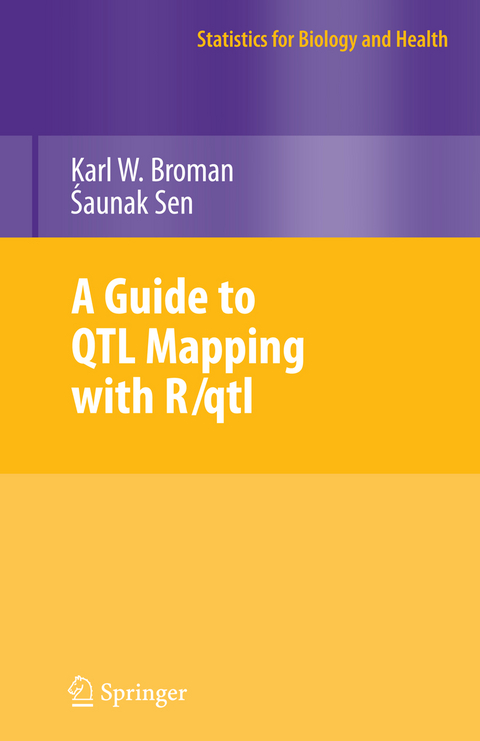
A Guide to QTL Mapping with R/qtl
Seiten
2011
Springer-Verlag New York Inc.
978-1-4614-1708-8 (ISBN)
Springer-Verlag New York Inc.
978-1-4614-1708-8 (ISBN)
Quantitative trait locus (QTL) mapping is used to discover the genetic and molecular architecture underlying complex quantitative traits. It has important applications in agricultural, evolutionary, and biomedical research. R/qtl is an extensible, interactive environment for QTL mapping in experimental crosses. It is implemented as a package for the widely used open source statistical software R and contains a diverse array of QTL mapping methods, diagnostic tools for ensuring high-quality data, and facilities for the fit and exploration of multiple-QTL models, including QTL x QTL and QTL x environment interactions. This book is a comprehensive guide to the practice of QTL mapping and the use of R/qtl, including study design, data import and simulation, data diagnostics, interval mapping and generalizations, two-dimensional genome scans, and the consideration of complex multiple-QTL models. Two moderately challenging case studies illustrate QTL analysis in its entirety.
The book alternates between QTL mapping theory and examples illustrating the use of R/qtl. Novice readers will find detailed explanations of the important statistical concepts and, through the extensive software illustrations, will be able to apply these concepts in their own research. Experienced readers will find details on the underlying algorithms and the implementation of extensions to R/qtl. There are 150 figures, including 90 in full color.
The book alternates between QTL mapping theory and examples illustrating the use of R/qtl. Novice readers will find detailed explanations of the important statistical concepts and, through the extensive software illustrations, will be able to apply these concepts in their own research. Experienced readers will find details on the underlying algorithms and the implementation of extensions to R/qtl. There are 150 figures, including 90 in full color.
Importing and simulating data.- Data checking.- Single-QTL analysis.- Non-normal phenotypes.- Experimental design and power.- Working with covariates.- Two-dimensional, two-QTL scans.- Fit and exploration of multiple-QTL models.- Case study I.- Case study II.
| Erscheint lt. Verlag | 2.12.2011 |
|---|---|
| Reihe/Serie | Statistics for Biology and Health |
| Zusatzinfo | 87 Illustrations, color; 64 Illustrations, black and white; XII, 400 p. 151 illus., 87 illus. in color. |
| Verlagsort | New York, NY |
| Sprache | englisch |
| Maße | 155 x 235 mm |
| Themenwelt | Informatik ► Weitere Themen ► Bioinformatik |
| Mathematik / Informatik ► Mathematik | |
| Naturwissenschaften ► Biologie ► Biochemie | |
| Naturwissenschaften ► Biologie ► Genetik / Molekularbiologie | |
| Naturwissenschaften ► Biologie ► Zoologie | |
| ISBN-10 | 1-4614-1708-2 / 1461417082 |
| ISBN-13 | 978-1-4614-1708-8 / 9781461417088 |
| Zustand | Neuware |
| Haben Sie eine Frage zum Produkt? |
Mehr entdecken
aus dem Bereich
aus dem Bereich
Buch | Softcover (2021)
Springer Spektrum (Verlag)
CHF 69,95
Grundlagen, Algorithmen, Anwendungen
Buch | Hardcover (2022)
Wiley-VCH (Verlag)
CHF 109,95


